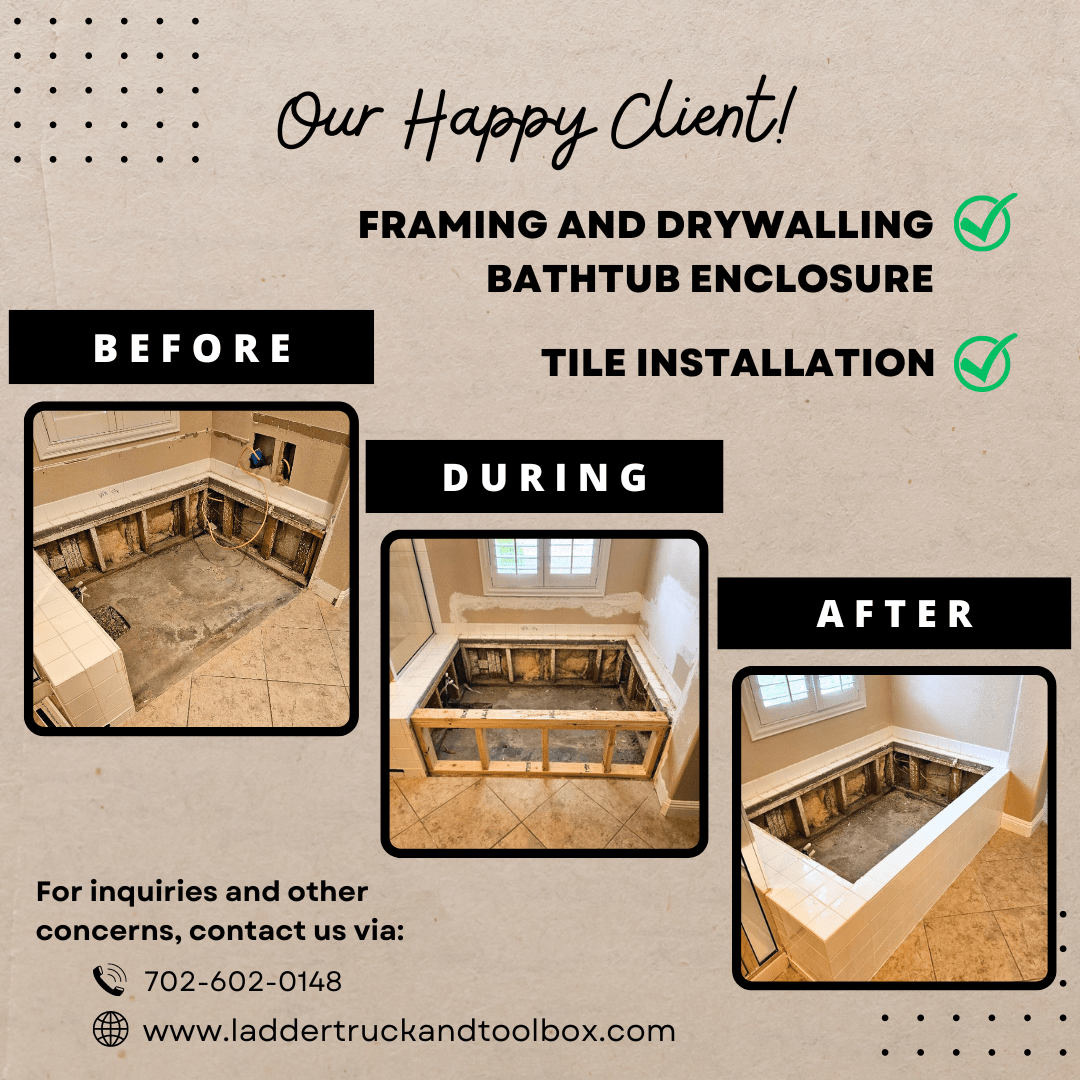Drywall Repair
Drywall Repair
Maintaining and repairing drywall professionally is crucial for preserving your home’s aesthetic appeal and ensuring its structural integrity. Whether you’ve accidentally nicked the wall during furniture moving or need to conceal unsightly holes, our team can handle it all. We arrive punctually, dressed in uniform, and fully prepared to complete your job to perfection.
We specialize in addressing various types of drywall damage, including:

Our approach goes beyond mere repairs; we also investigate the root cause of the drywall damage and take proactive measures to prevent future occurrences.
To clarify, we are NOT a mold remediation company. If we detect any mold, we will stop work, notify you to get a mold test, and resume only after licensed professionals have completed their work. We want your home to be a safe environment, and we “know our lane” when it comes to things like this. We can provide resources to help you find these professionals and recommend other licensed companies for this work.
In addition to standard drywall maintenance and repair, we offer specialized services such as: Repair and finish of Green board, Gypsum board, Cement board, SheetRock, and Stucco.
What goes into the price of a drywall job?
The expense associated with drywall repair can vary based on factors such as the nature and cause of the damage and the drywall’s location. While many drywall repairs are relatively straightforward and can be completed quickly, issues involving moisture, mold, or mildew may require more extensive repair work and potentially higher costs to prevent future damage recurrence.

Several Factors that influence the price of a drywall job:
Being aware of these factors aids handymen and clients in gauging and discussing reasonable pricing for drywall projects tailored to specific needs and expected results. Open communication regarding project specifics is crucial to ensure accurate estimates and satisfactory results.
Our Gallery
Various drywall jobs may utilize either can texture or hopper/mud, which can affect the project’s overall cost. Here’s how:

Scope of the Job
For smaller touch-ups, repairs, or areas where a quick fix is needed, using can texture may be sufficient and cost-effective.
Customization Needs
Texture from a can is easy to apply but may lack the customization and consistency of texture achieved with a hopper/mud setup.
Labor and Skill Requirements
It is generally less labor-intensive and requires less specialized skill, making it a cost-effective option for many projects.

Scope of the Job
Larger projects such as entire wall or ceiling treatments, especially those requiring custom textures or designs, may necessitate hopper/mud, which can impact costs differently.
Customization Needs
Hopper/mud allows for greater customization, making it suitable for achieving unique designs.
Labor and Skill Requirements
Projects using hopper/mud may incur higher labor costs due to the expertise and time needed for proper application.
So basically, the choice between can texture and hopper/mud depends on factors such as project size, customization needs, budget considerations, and desired finish. Consulting with our professional handymen can help determine the best approach that best aligns with the project requirements while balancing cost-effectiveness and quality results.
Drywall Mud/Texture and Drying Time: Ensuring Quality Results
When it comes to applying drywall mud or texture to walls or ceilings, one of the critical factors to consider is the drying time required for a flawless finish. Drywall mud, used to fill joints and create smooth surfaces, as well as texture applications for decorative finishes, needs adequate drying time to set properly. Allowing adequate drying time for quality assurance is crucial for ensuring a high-quality finish that is durable and aesthetically pleasing. Rushing the drying process can lead to flaws or imperfections that may require additional touch-ups or repairs later on.
Drying Time Considerations
The drying time for drywall mud and texture can vary depending on factors such as humidity levels, temperature, and the type of mud or texture applied. Thicker applications or complex textures may require longer drying times to ensure a solid and durable finish.
Use of Fans
To expedite the drying process and maintain consistent drying conditions, professionals often use fans or ventilation systems. Strategic placement of fans helps circulate air, promoting evaporation and drying of the mud or texture layer. However, even with fans, certain textures or thick mud applications may still require additional drying time.
Next-Day Visit for a 24-Hour Drying Time
In some cases, achieving optimal results may necessitate a next-day visit by our handyman. Typically, we allow at least 24 hours of dry time for drywall mud and texture applications before proceeding with sanding, texturing, and painting or paint matching. This additional time allows the applied mud or texture to dry completely and settle evenly, minimizing the risk of cracks, shrinkage, or texture inconsistencies, resulting in a durable and professional finish.










